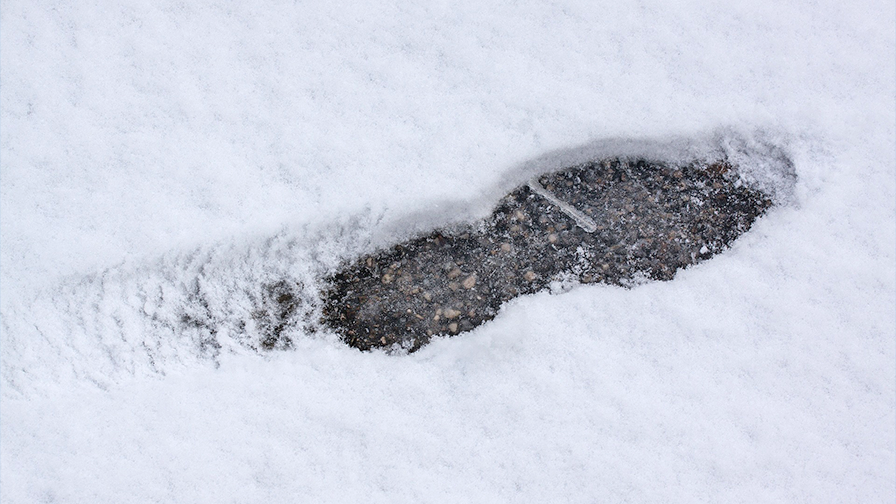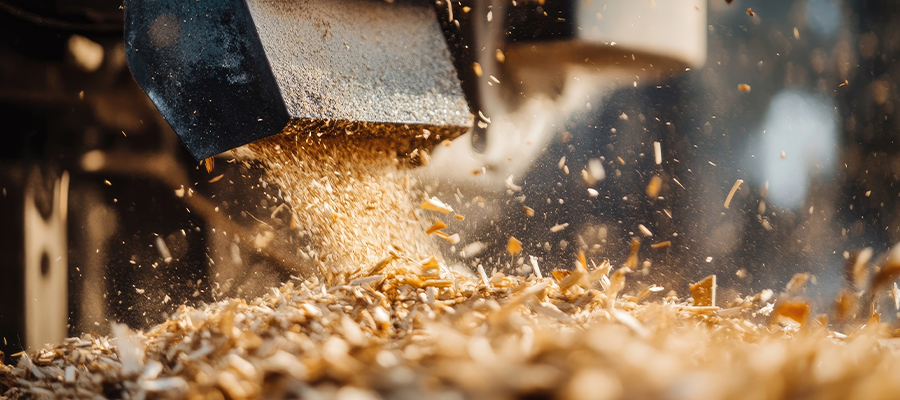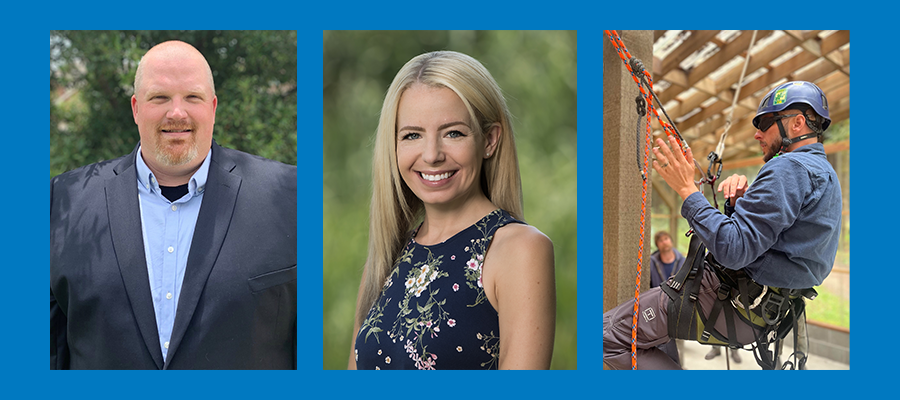- Vegetation Management Services
- Industries
- In Your Neighborhood
- About
- Careers
- Webinars
- Articles
Taking a Closer Look at the Human Elements of Slips, Trips, and Falls

Taking a Closer Look at the Human Elements of Slips, Trips, and Falls
By Adrienne Jones, safety manager, ACRT
As a safety professional, one of the most disturbing things I’ve seen is a video of an employee who was looking down at their phone while walking, slipped off a curb, and ended up being hit by a vehicle. Thankfully, that employee fully recovered and returned to work, but this incident was a stark reminder of the ongoing pattern of distracted walking that needs attention. Slip, trip, and fall occurrences have much to do with the human elements of distraction, complacency, and stress, just to name a few.
Distractions are anything that draws a person’s attention away from the task at hand, and in the modern world, our devices top the list. These devices can make us vulnerable to hazards around us, especially when engaged in activities such as texting, talking on the phone, or listening to music through headphones.
It can be easy to forget how much our senses have to do with slips, trips, and fall occurrences. When it comes to walking, auditory cues can oftentimes be more important than visual ones; something as simple as hearing our footsteps can significantly contribute to our balance and walking safety.
Other human factors like distractions, stress, fatigue, and rushing play important roles in the slips, trips, and falls incidents our industries see so often. The role of inattention is huge.
According to the National Institute for Occupational Safety and Health (NIOSH), 18% of the 1,176,340 nonfatal work injuries resulting in days away from work in 2020 were related to slips, trips, and falls.
Our organization promotes proper footwear, addresses physical hazards, highlights weather conditions, and so on, but it’s important to look at the human element — the emotions and mental state we’re in that also contribute to distracted walking.
A study on non-fatal occupation falls conducted by Yeoh, Lockhart, and Wu, looked at the relationship between employees’ length of service and the rate of accidents. The results showed, employees with more than a year of employment “experienced more than 70% of fall accidents,” while employees with less than a year of employment experienced “considerably less (~28.8%).”
The takeaway? Human factors like complacency can be combated by implementing annual training programs that reinforce fall-safety awareness.
Going back to the start
When looking beyond physical hazards, the mental state of employees is in direct correlation with slips, trips, and falls incidents. In just seconds, a person can become hyper-focused on a task — whether they’re looking up for conductors and trees, searching for meters, or trying to locate an address.
It’s easy to mentally “check out” during the task of walking. ACRT Senior Operations Manager Jerry Staton reflects on “highway hypnosis” in a previous T&D World article — but this phenomenon isn’t limited to just driving. It can take place just as often when we’re walking. Most people have been walking from such a young age that it’s a natural task we’ve become complacent with and take for granted.
Think about it: Most individuals in the green industry walk more than they drive every single day.
When a person’s attention is focused elsewhere, they are less likely to participate in active safe walking — an awareness focusing on where you are walking, every step you take. Taking the time to scan your surroundings for hazards, focusing on the immediate terrain, and being conscious of potential risks in your path can prevent costly incidents. These daily tips for safe walking practices can improve our overall awareness and create safe, consistent habits:
- Walk at appropriate speeds.
- Take your time. Practice mindfulness and focus on the present.
- Test footing before committing weight.
- Use your arms to keep you balanced.
- Eliminate distractions such as mobile devices.
- Avoid carrying large objects.
- Avoid wearing headphones.
- Avoid wearing sunglasses in low-light areas.
- Use railings on stairs and mirrors at corners.
- Reduce over-striding when walking.
- Always choose the safest route over the shortest.
Safety versus convenience
It’s always best to take the safest route over the shortest. That can be a difficult thing to balance when there’s work to be done within a set number of hours. Even in my own life, I find myself wanting to take shortcuts. We have a natural instinct to be efficient, but that should never come at the cost of safety.
It’s common for field employees to work in dangerous, hard-to-navigate, uneven terrain with tree roots and rocks. When the target destination is identified, there are often two choices presented: the shortest route that helps you arrive quickly or the option to get back into your vehicle, drive to a different location, and access the location differently — adding on additional time
Employees are frequently inclined to take that short route. As humans, we do this a lot in our daily lives. We tell ourselves, “No, I can do it. I’ll be careful,” and convince ourselves because of those external pressures. As humans, we’re good at convincing ourselves of our choices.
As individuals, we must hold ourselves accountable by being aware of our surroundings and avoiding unnecessary distractions. Active safe walking sharply reduces the chances of being involved in a painful and costly incident. By increasing our awareness and improving our daily habits, we can prevent the occurrence of slips, trips, and falls.
This article was originally published by Landscape Business.
Related Articles

Servant Leadership in Utility Vegetation Management By C. Troy Ross, President, ACRT and ACRT Pacific On a chilly Monday morning, a utility vegetation management crew gathers for their weekly briefing. Instead of launching into instructions, their supervisor begins by asking each team member how they’re doing. One mentions a child’s illness, another shares excitement about[...]
Read More
Turning Vegetation Waste into Opportunity By Aana Agrawal, Sustainability and Resilience Manager, EnviroScience The utility vegetation management (UVM) sector plays a crucial role in ensuring the smooth transmission of power across regions and cities by keeping plant growth under control within the vicinity of transmission and distribution lines. However, unrefined vegetation maintenance practices often focus[...]
Read More
Reflections from Will Nutter Silver Shield Award Recipients By Bob Urban, Senior Manager, ACRT Services In an industry where the stakes are high and every decision can have life-altering consequences, leadership in utility arboriculture isn’t just a managerial function; it’s a calling. Nowhere is this more evident than in the recipients of the Will Nutter[...]
Read More
The Electric Butterfly: Reconnecting with Nature on the Edges By Ryan Meccage, Business Development Manager, ACRT Services In an age dominated by smartphones, constant connectivity, and algorithm-driven content, we’ve never been more digitally immersed. Yet somehow, we’ve also never felt so far removed from the natural world beneath our feet. The urge to step away[...]
Read MoreRecent Posts
- Alex Fields Awarded ACRT Safety Challenge Coin 20th Nov 2025
- Servant Leadership in Utility Vegetation Management 12th Nov 2025
- ACRT Honors Our Veterans 10th Nov 2025
- Anna Davis Awarded Safety Challenge Coin 04th Nov 2025
- ACRT Senior Consulting Utility Forester Recognized as Safety Superstar 15th Oct 2025
Categories
The Leader In Vegetation Management
We are all about people, and we put safety first. Ready to work with our well-trained team?